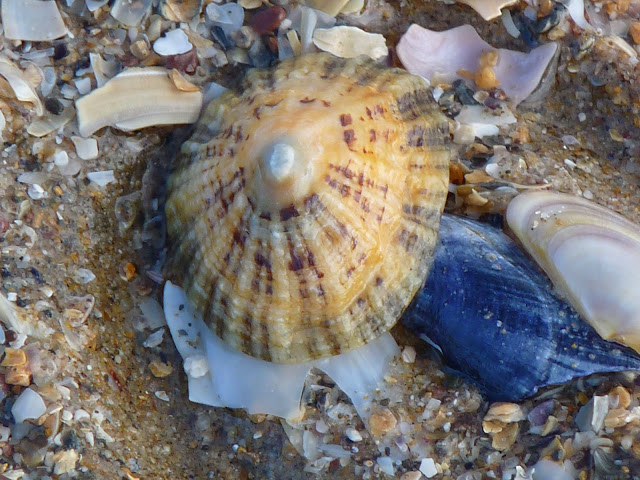I mentioned in my
previous post that I would add the shells we saw in a separate entry, so here they are. I saw them all as I walked along towards the high-tide island of Burry Holms at the north-western extremity of the Gower Peninsula.
 |
| You can just see Worm's Head, Rhossili, below the cloud in the centre. |
 |
| Razor Shell, possibly an Eggshell Razor |
 |
| Oyster |
 |
| Mussel |
 |
| The mist lifted a bit as we turned to go. |
 |
| We passed this Iron Age hill fort mound at Harding's Down as we left the village of Llangennith. |
Postcsript 2014: please read comment below by Craig Howells for a further (corrective) note concerning the mention of a 'hill fort' at Harding's Down in this post.










5 comments:
Caroline,
Enjoyed these shell photos, very well done. Never seen the limpet before. The old fort is impressive ever after all these years.
Stunning views!! Loved your post. Glad you had individual pictures of the shells. I live far away from the sea so whenever I happen to be at a beach I pick a whole lot of shells. I find the shapes most fascinating!!
Thank you for mentioning the link between Wales and Khasi. I hope you found the Wiki article interesting.
what beautiful shells...
Your shells are beautiful ~ and reminded me that I have a few razor clam shells from there :)
The above ancient monument (earth circle, ditch and mound) is not a hill-fort. It's a causeway enclosure, which were used for tribal function in prehistoric Britain. Many causeway enclosures were later made into stone circles. A hill fort is a defensive enclosure, which are, as the name implies, placed upon the top of hills.
Post a Comment